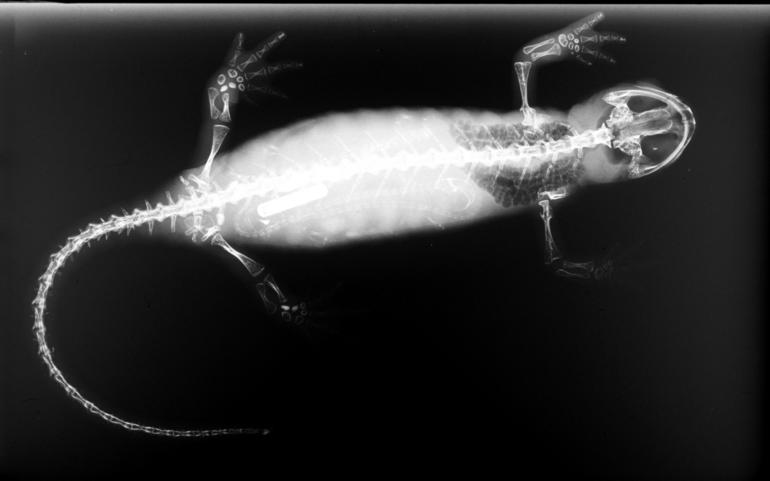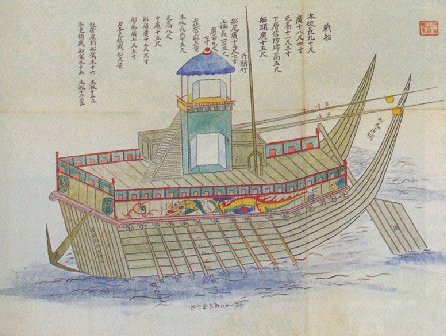|
Cheju Salamander
''Hynobius quelpaertensis'', the Jeju salamander, also spelled Cheju salamander, is a species of salamander found on various islands and peninsulas off the southwestern coast of the Korean Peninsula, including Jindo, Geojedo, Jejudo, and Namhae. It inhabits moist mountain forests. Jeju salamanders are speckled brown in color. Adult males are in length, and adult females . Males are also distinguished by their thick front legs and black coloration on their backs. This species mates from March to late April, laying eggs under small rocks and leaves in mountain pools. The Jeju salamander was previously considered a subspecies of the Korean salamander, and was classified as ''Hynobius leechii quelpaertensis''. See also *List of amphibians of Korea *Korean salamander The Korean salamander (''Hynobius leechii''), or Gensan salamander, is the most common species of salamander on the Korean peninsula, and is also found and on Jeju Island and in the north-eastern Chinese province ... [...More Info...] [...Related Items...] OR: [Wikipedia] [Google] [Baidu] |
Tamezo Mori
, (1884–1962) was a Japanese naturalist in Chōsen (1910–1945). He taught at a preparatory school for Keijō Imperial University in Seoul from 1909 until he was expelled by the American forces in 1945. Primarily an ichthyologist, he published numerous works on the zoology of the Korean Peninsula and Manchuria Manchuria is an exonym (derived from the endo demonym "Manchu") for a historical and geographic region in Northeast Asia encompassing the entirety of present-day Northeast China (Inner Manchuria) and parts of the Russian Far East ( Outer .... Some of these, such as his ''Checklist of the Fishes of Korea'' and the 1934 ''Coloured Butterflies from Korea'', are still in print. References *Austin, Oliver. 1948. The Birds of Korea. ''Bulletin of the Museum of Comparative Zoology at Harvard College'' 101 no. *Vladykov, V. & Greeley, J. 1963. ''Order Acipenseroidei'' in Soft-rayed Bony fishes : class Osteichthyes, order Acipenseroidei, order Lepisostei, order Isospon ... [...More Info...] [...Related Items...] OR: [Wikipedia] [Google] [Baidu] |
Salamander
Salamanders are a group of amphibians typically characterized by their lizard-like appearance, with slender bodies, blunt snouts, short limbs projecting at right angles to the body, and the presence of a tail in both larvae and adults. All ten extant salamander families are grouped together under the order Urodela. Salamander diversity is highest in eastern North America, especially in the Appalachian Mountains; most species are found in the Holarctic realm, with some species present in the Neotropical realm. Salamanders rarely have more than four toes on their front legs and five on their rear legs, but some species have fewer digits and others lack hind limbs. Their permeable skin usually makes them reliant on habitats in or near water or other cool, damp places. Some salamander species are fully aquatic throughout their lives, some take to the water intermittently, and others are entirely terrestrial as adults. This group of amphibians is capable of regenerating lost l ... [...More Info...] [...Related Items...] OR: [Wikipedia] [Google] [Baidu] |
Korean Peninsula
Korea ( ko, 한국, or , ) is a peninsular region in East Asia. Since 1945, it has been divided at or near the 38th parallel, with North Korea (Democratic People's Republic of Korea) comprising its northern half and South Korea (Republic of Korea) comprising its southern half. Korea consists of the Korean Peninsula, Jeju Island, and several minor islands near the peninsula. The peninsula is bordered by China to the northwest and Russia to the northeast. It is separated from Japan to the east by the Korea Strait and the Sea of Japan (East Sea). During the first half of the 1st millennium, Korea was divided between three states, Goguryeo, Baekje, and Silla, together known as the Three Kingdoms of Korea. In the second half of the 1st millennium, Silla defeated and conquered Baekje and Goguryeo, leading to the " Unified Silla" period. Meanwhile, Balhae formed in the north, superseding former Goguryeo. Unified Silla eventually collapsed into three separate states due to ... [...More Info...] [...Related Items...] OR: [Wikipedia] [Google] [Baidu] |
Jindo (island)
Jindo Island is the third largest island in South Korea. Together with a group of much smaller islands, it forms Jindo County. It is located in South Jeolla province, just off the southwest corner of the Korean peninsula. The island is separated from the mainland by the Myeongnyang Strait; however, this strait is now spanned by South Korea's longest cable-stayed bridge spanning 484 meters. Here in 1597 admiral Yi Sun-sin won the Battle of Myeongnyang, defeating a vastly superior Japanese fleet. The Korea Jindo Dog is native to Jindo Island. Every year, on a variable day in the spring or summer, a narrow land pass (about 2.9 km long and up to 40 meters wide) opens for about an hour between the main Jindo Island and small Modo island as a result of tidal activity. This event attracts hundreds of thousands of tourists and is accompanied by local festivals. History The island was known and inhabited since prehistoric time. In 995, it was called Haeyangdo, and later renamed ... [...More Info...] [...Related Items...] OR: [Wikipedia] [Google] [Baidu] |
Geojedo
Geojedo or Geoje Island (also McCune–Reischauer: Kŏje Island) is the principal island of Geoje City, on the southern coast of Gyeongsangnam-do province, South Korea. It is joined to land by two bridges from nearby Tongyeong. Gohyeon is the largest town on the island. The Busan–Geoje Bridge was opened in December 2010 and provides a more direct connection to the city of Busan. Geoje Island covers an area of , the second largest island in South Korea (second to Jeju Island). The landscape features several peaks: Gara (), Gyerong (), the skirmisher mountain (), Daegeum () and Googsabong (). Geojedo is known for its rich deposits of granite. The southern belt of Geojedo, together with part of Namhaedo in Namhae County, belongs to Hallyeo Maritime National Park. Geoje Island features several natural harbors. Shipbuilding is the largest industry on the island. The second and third largest shipyards in South Korea are both located on the island, Daewoo Shipbuilding and ... [...More Info...] [...Related Items...] OR: [Wikipedia] [Google] [Baidu] |
Namhae County
Namhae County (''Namhae-gun'') is a county in South Gyeongsang Province, South Korea. Demographics As of 2005, Namhae had a population of 54,392. However, Namhae has witnessed an aging and decreasing population, having had a population of 137,914 in 1964. Administrative divisions Namhae-gun is divided into 1 ''eup'' and 9 ''myeon''. * Namhae-eup * Changseon-myeon * Gohyeon-myeon * Idong-myeon * Mijo-myeon * Nam-myeon * Samdong-myeon * Sangju-myeon * Seo-myeon * Seolcheon-myeon Namhae in popular culture *The fictional character Jin-Soo Kwon (portrayed by Daniel Dae Kim) on the ABC television show '' Lost'' is from Namhae. *Korean Drama "Couple or Trouble" aka "Fantasy Couple" was set in Namhae. The German village Dogil Maeul and Hilton Namhae Golf Spa were featured. *The 2009 documentary “Home from Home” (''Endstation der Sehnsüchte''), directed by Cho Sung-hyung, was filmed in the German Village Dogil Maeul (독일 마을). *In the 2017 Korean drama "Because This is M ... [...More Info...] [...Related Items...] OR: [Wikipedia] [Google] [Baidu] |
Korean Salamander
The Korean salamander (''Hynobius leechii''), or Gensan salamander, is the most common species of salamander on the Korean peninsula, and is also found and on Jeju Island and in the north-eastern Chinese provinces of Liaoning, Jilin and Heilongjiang. It typically lives on forested hills, and from time to time mass deaths occur in Korea when salamanders encounter man-made drainage structures. This has prompted Korean government officials to execute a series of mass evacuations in heavily salamandered areas. Subspecies *''Hynobius leechi quelpartensis'' See also *List of amphibians of Korea This is a list of amphibian species found in the wild in Korea, including the Korean Peninsula and Jeju Island. A total of 20 species of amphibians are known from Korea; this includes two species of salamander that were not discovered until the ... * Korean crevice salamander * Kori salamander * Jiyul - Buddhist nun who fasted to stop destruction of Korean salamander lands ''Some Reptiles ... [...More Info...] [...Related Items...] OR: [Wikipedia] [Google] [Baidu] |
List Of Amphibians Of Korea
This is a list of amphibian species found in the wild in Korea, including the Korean Peninsula and Jeju Island. A total of 20 species of amphibians are known from Korea; this includes two species of salamander that were not discovered until the 21st century. This list treats the taxonomic designations found in Frost (2007) as authoritative. There have been major revisions of amphibian taxonomy, including the taxonomy of many Korean species, since the late 20th century. This has included studies which have found species such as the Korean brown frog and Imienpo Station frog, which were previously considered to be Korean varieties or subspecies of more widespread species, to be distinct. It has also included a wholesale revision of the taxonomy of the Ranidae, or true frogs—for example, the common dark-spotted frog was formerly classified as ''Rana nigromaculata'' but is now classified as ''Pelophylax nigromaculatus''. The following abbreviations are used in the list: *I: ... [...More Info...] [...Related Items...] OR: [Wikipedia] [Google] [Baidu] |
Hynobius
''Hynobius'' is a genus of salamander (Asian salamanders) in the family Hynobiidae, occurring in Japan, Korea, China, Taiwan and Far East Russia. It contains these species: Species Species included (as of March 2021): *'' Hynobius abei'' Sato, 1934 *'' Hynobius abuensis'' Matsui, Okawa, Nishikawa, and Tominaga, 2019 *'' Hynobius akiensis'' Matsui, Okawa, and Nishikawa, 2019 *'' Hynobius amakusaensis'' Nishikawa and Matsui, 2014 *'' Hynobius amjiensis'' Gu, 1992 *''Hynobius arisanensis'' Maki, 1922 *'' Hynobius bakan'' Matsui, Okawa, and Nishikawa, 2019 *''Hynobius boulengeri'' (Thompson, 1912) *'' Hynobius chinensis'' Günther, 1889 *''Hynobius dunni'' Tago, 1931 *'' Hynobius formosanus'' Maki, 1922 *''Hynobius fossigenus'' Okamiya, Sugawara, Nagano, and Poyarkov, 2018 *'' Hynobius fucus'' Lai and Lue, 2008 *'' Hynobius glacialis'' Lai and Lue, 2008 *'' Hynobius geojeensis'' Min and Borzée, 2021 *'' Hynobius guabangshanensis'' Shen, 2004 *'' Hynobius guttatus'' Tominaga, Mat ... [...More Info...] [...Related Items...] OR: [Wikipedia] [Google] [Baidu] |
Amphibians Of Korea
Amphibians are four-limbed and ectothermic vertebrates of the class Amphibia. All living amphibians belong to the group Lissamphibia. They inhabit a wide variety of habitats, with most species living within terrestrial, fossorial, arboreal or freshwater aquatic ecosystems. Thus amphibians typically start out as larvae living in water, but some species have developed behavioural adaptations to bypass this. The young generally undergo metamorphosis from larva with gills to an adult air-breathing form with lungs. Amphibians use their skin as a secondary respiratory surface and some small terrestrial salamanders and frogs lack lungs and rely entirely on their skin. They are superficially similar to reptiles like lizards but, along with mammals and birds, reptiles are amniotes and do not require water bodies in which to breed. With their complex reproductive needs and permeable skins, amphibians are often ecological indicators; in recent decades there has been a dramatic de ... [...More Info...] [...Related Items...] OR: [Wikipedia] [Google] [Baidu] |




.png)